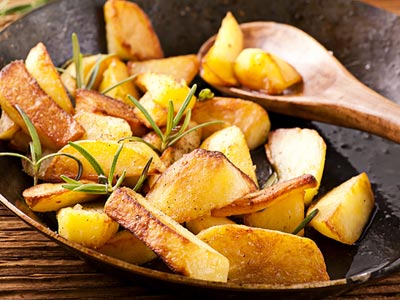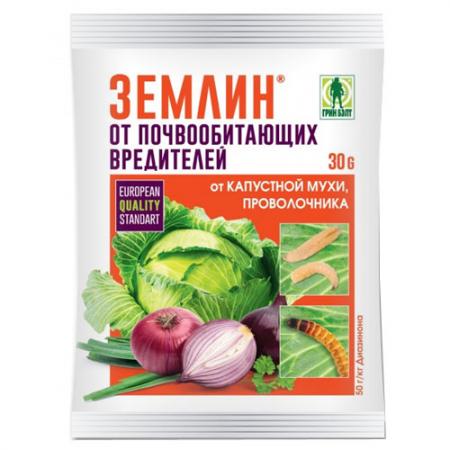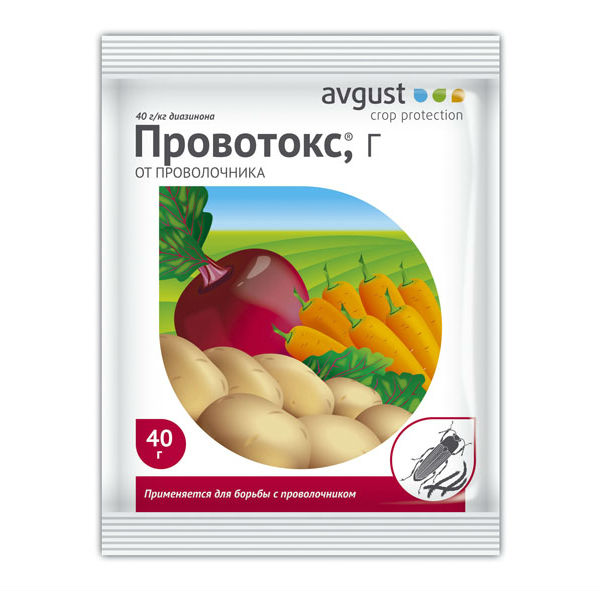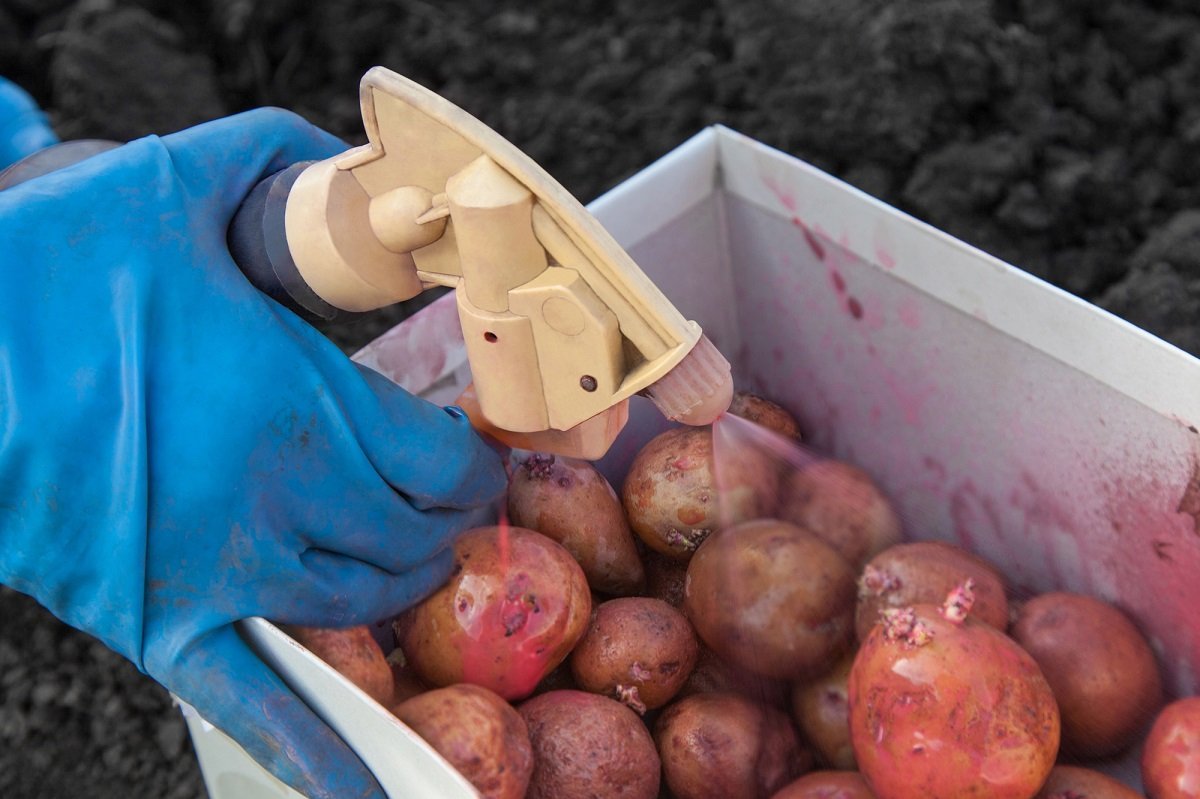Potatoes play an important role in the diet of a modern person, being part of various first and second courses, salads and snacks. Almost every modern person tries to grow this plant crop on his personal plot, while facing not only the problem of proper care to maximize the yield, but also pest control. Manufacturers today offer the widest range of effective pesticides. But for some, this is a kind of taboo, supposedly the chemicals that are part of the drugs harm the human body. Such summer residents use folk methods of struggle, which are very relevant and effective, according to experienced reviews.
The main properties of potatoes
The potato culture in Russia appeared thanks to Peter I, who brought it from South America at the end of the 17th century, which is its homeland (it takes its history more than 8 thousand years ago on the territory of modern Bolivia). For a very long time, many refused to use it. Culture began to become widespread only when Peter I called dishes made from potatoes "food for the elite." This food came to taste very quickly and after 50-100 years it was massively grown throughout the territory of Ancient Russia.
Modern chefs and housewives consider potatoes to be a universal product, since the list of cooking dishes from it is very extensive. It can be stewed, boiled, fried, baked and even frozen, while the taste remains at the highest level. It is rich in vitamins: C and B, starch, a number of trace elements, and the calorie content is several times higher than the calorie content of other vegetables. It is also actively used in folk medicine, both raw and boiled.
By the amount of starch content in potatoes, it is conventionally divided into a number of types:
- Table varieties - used in everyday life for cooking, they have special taste properties;
- Technical varieties - the percentage of starch in them exceeds 18-20%. These varieties are grown for processing, starch is produced from them, they are included in various medicines, etc.;
- Forage varieties - grown for animal feeding.
The potato belongs to the genus Nightshade, the Solanny family. It received its first scientific name in 1596, thanks to Kaspar Baugin. This plant culture belongs to perennial tuberous herbaceous plants, reaching a height, depending on the variety, up to 1 meter. Only tubers are edible, fruits (rounded in diameter 0.5-1.5 cm) that appear after flowering (blooms with small white-purple or pinkish flowers with a yellow center, depending on the variety) are very poisonous and not suitable for consumption. The stem is long, without leaves, part of it is above the ground, part is in the ground, up to 15-40 cm deep. The leaf is dark green.
The main pests of potatoes
The main goal of any gardener when growing potatoes on their own is to get the maximum yield.But, in addition to proper care, high-quality seed, fertilizing the soil and feeding the plant, an important factor is the protection of potato tubers and shoots from pests. Today, the fight against parasites is conventionally divided into 2 categories:
- Preventive measures that are carried out immediately before planting, before the appearance of pests, for example, processing potatoes with potassium permanganate before planting;
- Current, real actions aimed at combating pests that have already appeared are already dramatic and effective measures.
There are a huge number of insects who want to eat potato crops, which significantly affects its fruiting. For each type of pest, its own effective measures are applied, therefore, often, using preventive procedures, it is impossible to predict which type of pest "attacks" this year.
The main "lovers" of potatoes can be distinguished:
- The Colorado potato beetle infects absolutely all varieties of potatoes, but there are species that he especially loves, for example, Uladar, American, Pianchushka. This beetle is small in size with a rounded back, about 1-1.5 cm in length. The back is striped, where gray and yellow-brown stripes alternate, located vertically along the length. Wings are hidden under a solid back, presented in the form of a shell. Not many people know, but the Colorado potato beetle is capable of flying short distances if necessary. It eats potato leaves with pleasure, actively reproduces, laying eggs on the inner side of the leaf, small round bright orange eggs, reaching several dozen. Colorado larvae appeared after 10 days of brick shade, “naked”, without wings and protective shell. Young larvae during the growth period are very voracious and pose a great danger. The highest activity of the beetle occurs during the flowering period of the culture, due to which the tubers simply do not multiply, and the plant dies. The Colorado potato beetle is able to overwinter in the soil, at a depth of 30 cm, and become more active the next year.
The danger of the Colorado potato beetle is explained by its gluttony, good survival, the ability to fly, as well as its quick addiction to poisons and pesticides.
- Another potato lover is the wireworm, which is a small bright orange worm, no more than 2-2.5 cm long, and several mm in diameter. This worm is the larva of a beetle called the click beetle. The beetle itself does not eat potatoes, on the contrary, it feeds on weeds, wheatgrass, laying eggs there. The wireworm, unlike the Colorado potato beetle, eats potato tubers, making many small passes through them. As a result, they rot and lose their taste;
- The larvae of moths, popularly called potato scoops, love to eat potato tubers. Caterpillars crawl to the tubers through the stem, gnawing it, leading to the death of a whole bush;
- Cicadas are a small aphid-like insect. It feeds on the juice of young potato leaves, which leads to their drying and gradual withering of the entire bush;
- Not a small danger to potato bushes are the so-called potato fleas, reaching a size of no more than 2-3 mm in length. There is a large variety of this insect, but the brown fleas are the most harmful. Their larvae infect the root system of the plant, which leads to the gradual drying of the leaves first, and then the entire tops, and ultimately to the death of the bush;
- No less dangerous for potato crops is late blight, the so-called parasitic fungus, which promotes rotting and subsequent death of the plant. Affected tubers are not suitable for consumption, as they acquire a brown tint and begin to rot.Infection occurs from the ground, if there is an affected last year's tuber left there, or from tubers purchased from the hands for planting. In case of infection of the foliage, late blight spreads rapidly during hot and rainy weather.
Potato pest control methods
Today, you can count several dozen potato pests, for which different methods and methods are used. There are the main effective options aimed at destroying the most common potato parasites:
- In the fight against the Colorado potato beetle, a number of measures can be used:
- Pre-treatment of potato crops before planting. Experienced agronomists will tell you how to process potatoes before planting from the Colorado potato beetle. The most effective and safe for human health is the Prestige chloricotinyl drug, produced on imidacloprid. When the planting material treated with this preparation gets into the ground, a kind of “safe zone” is formed around the tuber, the plant develops well, not being invaded not only by the Colorado potato beetle, but also by a number of fungal diseases. It is excreted from the plant within 50-60 days, accordingly, it does not pose any harm to the human body. You need to process the tubers before planting, by diluting a solution of about 50 ml in 3 liters of water. The resulting consistency is sprayed onto the potatoes from all sides. After complete drying, you can start planting work. The price of 1 liter is, depending on the region, 2000-3000 rubles. RF. *;
- There are pesticides that are used to spray potato crops after the appearance of the Colorado potato beetle. The Commander has proven himself positively in this direction. According to the instructions, 1 ampoule, equal to 1 ml, is diluted in 5-7 liters of water, the stems and leaves of the plant are sprayed with the resulting solution from all sides, at the rate of applying 1 liter per 10 sq.m. The procedure is performed in the morning or evening, in dry weather. The average price in Russia is 1200-1500 rubles. per liter *;
- Treatment of potatoes before planting in the fight not only with the Colorado potato beetle, but also with the wireworm is possible with Tabu. Potatoes are processed immediately before planting from the wireworm and the Colorado potato beetle. The agent is dissolved in water, at the rate of 8 ml per 1 liter of water. The resulting solution is evenly applied with a puller on the potato seed. Once dry, the tubers are ready for planting. The product protects potato shoots for 30 days after emergence. It also gives a stable effect when spraying shoots. In this case, 10 ml is dissolved in 5 liters of water (at the rate of 1 liter per 5 square meters), the leaves are sprayed from all sides. The average price in Russia is about 100-150 rubles. for 10 ml *;
- As a popular alternative to fighting the Colorado potato beetle, you can use the simplest methods, planting between rows of potatoes with plant crops with a special specific aroma, for example, calendula, garlic, beets. When planting, wood ash (1/2 cup) and onion husks are added to the holes with seeds. When the husk decays, a specific smell appears that repels pests. In the fight against the already appeared beetles, you can use vinegar solutions: mix 500-600 ml of vinegar with 100-150 gr. soda, dilute with 5 liters of water. The resulting consistency is sprayed on all potato tops;
- Some gardeners claim that vodka applied to potato tubers before planting protects the plants not only from the Colorado potato beetle, but also the wireworm. It is applied in a concentrated form from all sides to each potato;
- Mechanical (manual) collection of the Colorado potato beetle is a very effective, but laborious method.
- In the fight against wireworms, the following methods give a good effect:
- Zemlin granular agent protects against such pests as wireworm. When planting potatoes, the preparation is mixed with sand or woody hall at the rate of 1 to 4. A tablespoon of the resulting mixture is placed in the hole at the bottom. For preventive purposes, the procedure is recommended to be repeated the next year. The price is 40-60 rubles. RF 30 g *;
- Another highly specialized drug, Provotox, is aimed at fighting the wireworm. This is a concentrated product that is recommended for use no more than 1 time per year. 1-2 grams of the drug is placed in the well before planting. One package 40 gr. enough for 10 sq.m. The cost varies between 15-30 rubles. RF for 40 g *.
- To combat late blight, it is recommended to follow a number of tips:
- Choose a potato variety that is more resistant to this fungal infection;
- Use only healthy planting material, if there are doubts about the defeat of potato seeds, it is better not to use them for germination;
- After collecting potatoes, remove all roots and tops from the site;
- Spud potato shoots 2 times per season;
- Use folk methods of struggle. Milk whey mixed with iodine has proven itself quite well. 10 drops of iodine are used for 1 liter of whey. The resulting consistency is used to treat the affected bushes. For preventive purposes, it can be used for healthy shoots;
- The use of copper sulfate gives good results. 20 gr. powder is diluted in 10 liters of hot water (about 50-60 degrees). After cooling, the solution is applied by spraying to the affected areas, the consumption is 1 liter per 5-7 sq.m. Price 100 gr. the drug is 30-50 rubles. RF *.
Getting a good harvest of potatoes is the desire of every gardener. Growing this culture is a very laborious process that requires not only proper and systematic care, but also pest control. Only a comprehensive and timely application of all rules and regulations for the care and control of parasites will guarantee a positive result and good yield.
Video
* the price is valid on June 25, 2018













